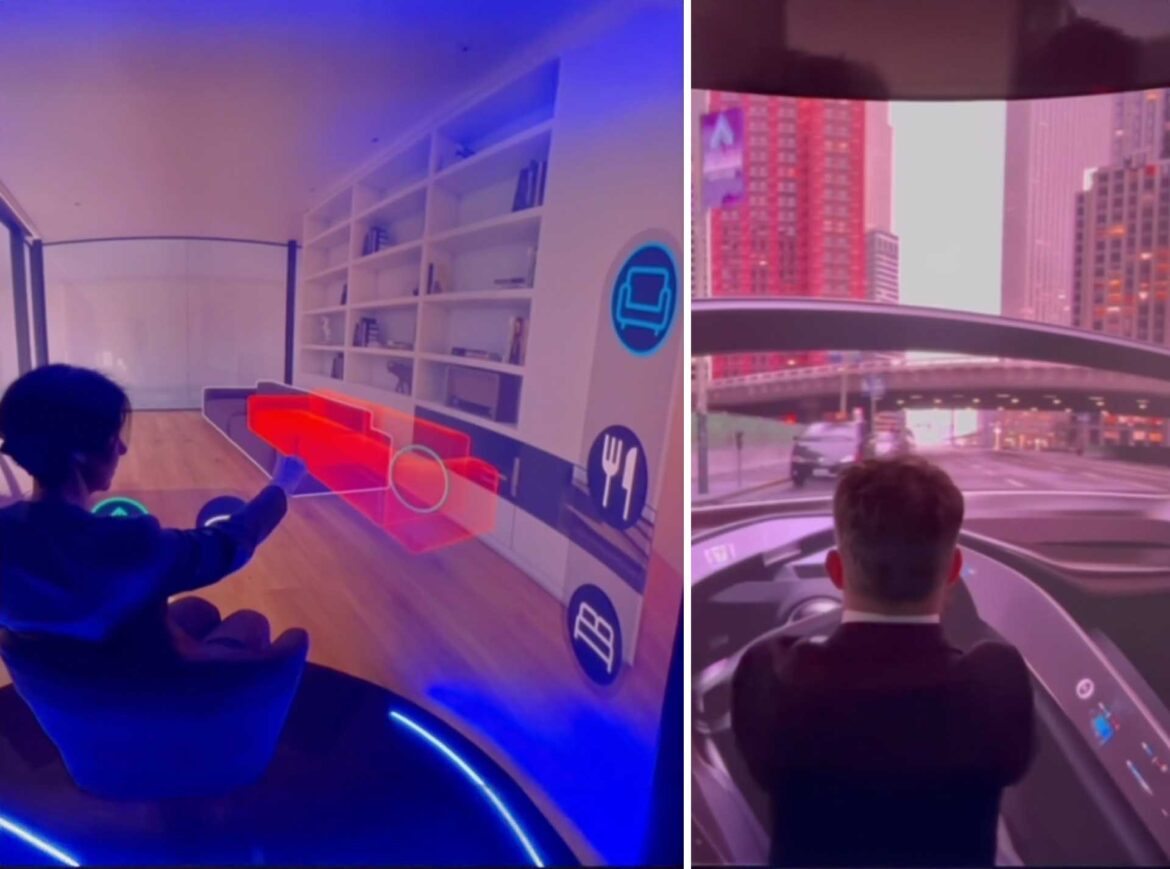Photo: Ulrich Buckenlei | XR Stager Newsroom captured at UNWARE 2025
Massive Virtual Reality Experience Without a Headset
The next section reveals: this space is not just a backdrop, but an intelligent actor. Through integrated sensors and AI-powered lighting architecture, the system analyzes movement, positioning, and even the emotional dynamics of its visitors.
Depending on the actions, the room’s behavior adapts – in color, intensity, and tone. This makes the experience not only immersive but also interactive. The system detects patterns and builds upon them, much like an improvisational stage partner.
- Intelligent lighting direction: Controlled by presence and gestures
- Adaptive scenography: Spaces that respond to emotions
- Seamless transitions: No visible tech, just impact
The visitor becomes a co-creator. Each run-through offers a different experience – depending on body language, speed, or even the number of people in the room.
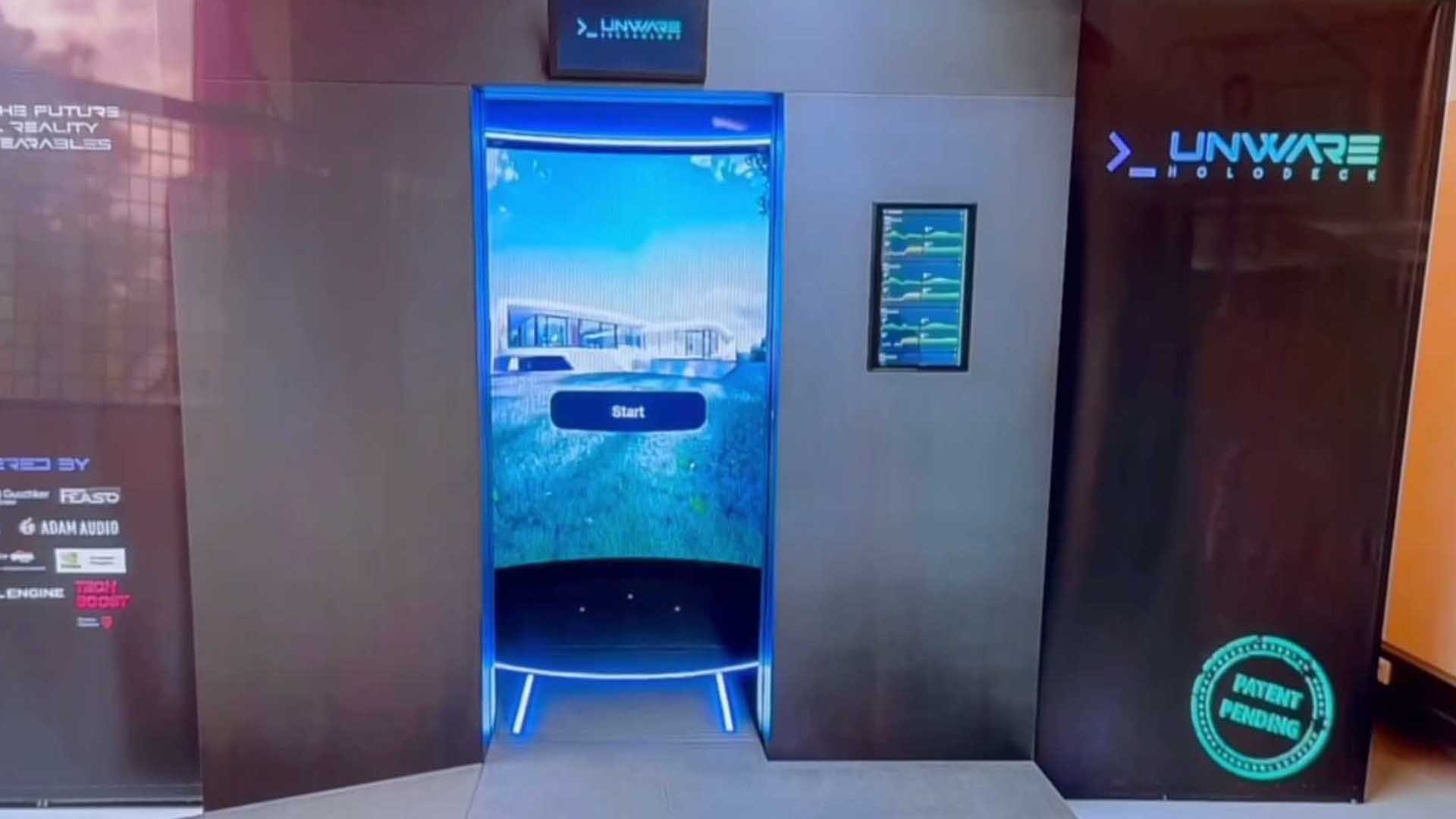
Photo: Ulrich Buckenlei | XR Stager Newsroom captured at UNWARE 2025
Artificial Intelligence Stages Experiences
At the heart of the immersive architecture is an intelligent, AI-based story engine module. This module determines in real time how scenes unfold, depending on what people do – or don’t do. It’s not the script that’s fixed, but the framework for emergent storytelling.
AI algorithms control lighting, projections, sound, and even vibrations. Through machine learning, the system improves with each session, learning which dramatic sequences are most impactful.
- Story engine: Narratives driven by action
- Dynamic dramaturgy: Every visit is different
- Machine learning: Experiences that evolve
What emerges is more than a show – it’s a learning process between space and person. The AI becomes the director, the partner in the moment.
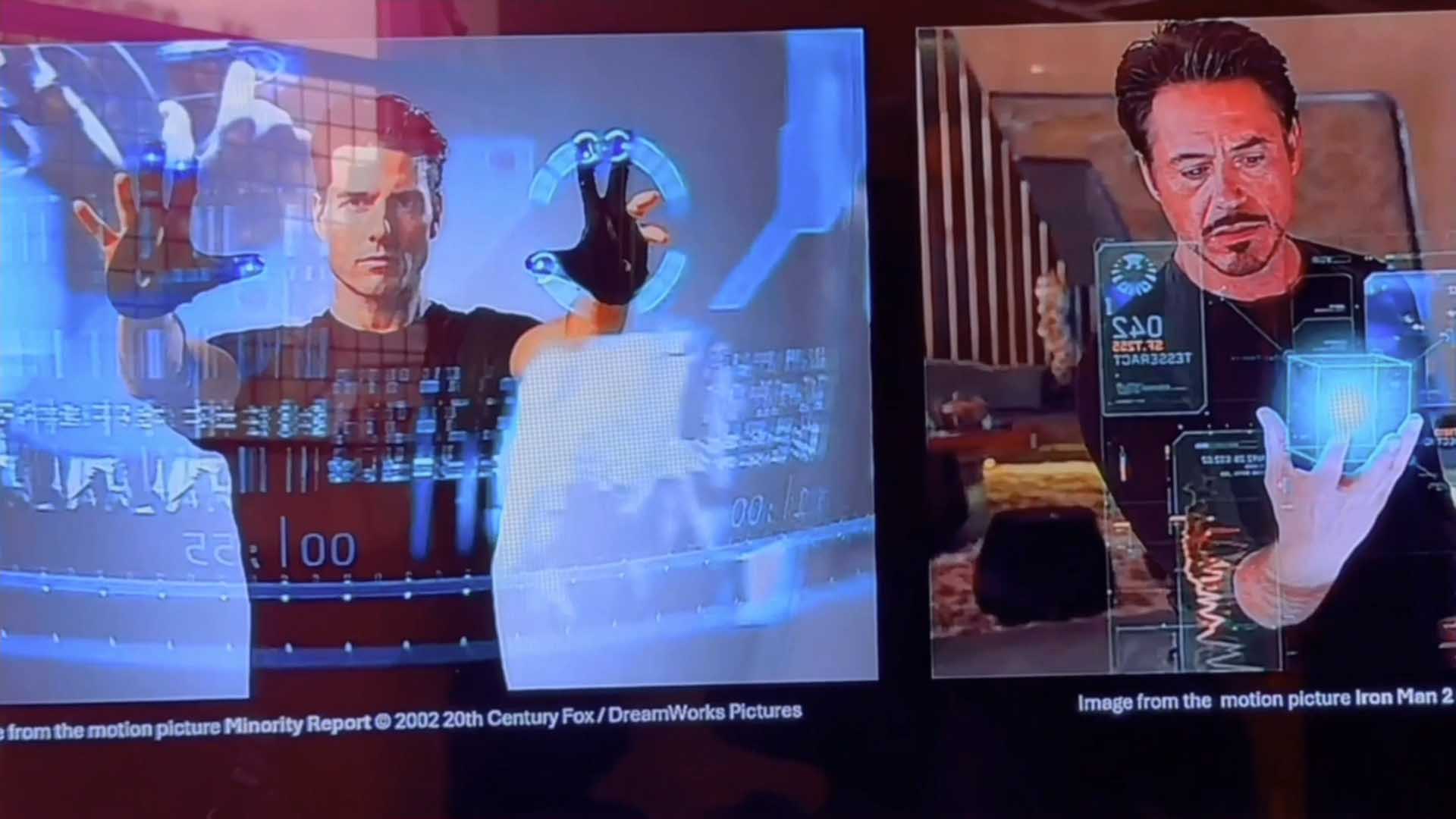
Photo: Ulrich Buckenlei | XR Stager Newsroom captured at UNWARE 2025
Virtual Reality Without Devices
While classic VR headsets isolate the user, the Holodeck opens a shared experience space. You stand together in the scene – no glasses, no controllers. Perception happens through the natural senses: sight, hearing, and touch.
Immersive depth is created through high-resolution light fields, precise soundscapes, and targeted thermal impulses. This interplay generates a feeling of presence that’s hardly comparable to traditional VR.
- No headset needed: Unrestricted vision and experience
- Group experience: Virtual spaces for teams, families, and audiences
- Multisensory: Stimuli for eyes, ears, and skin
This new form of reality is not individualized, but shared. It creates connection – and that’s what makes it so powerful.

Photo: Ulrich Buckenlei | XR Stager Newsroom captured at UNWARE 2025
Between Stage and Science
The immersive installation is not only art but also a research lab. Visoric’s XR expert team collaborates with universities and theaters to study the effects of multisensory spaces on humans — physically, psychologically, and cognitively.
The key question: How can knowledge be made tangible? Instead of talking about climate change, you experience it. Instead of reading about history, you walk through it. Learning becomes emotional and physical.
- Research collaboration: New insights through staging
- Experiential learning: Making the abstract tangible
- Emotional understanding: Education through experience
The future of didactics may lie exactly here – in the space that teaches by feeling.
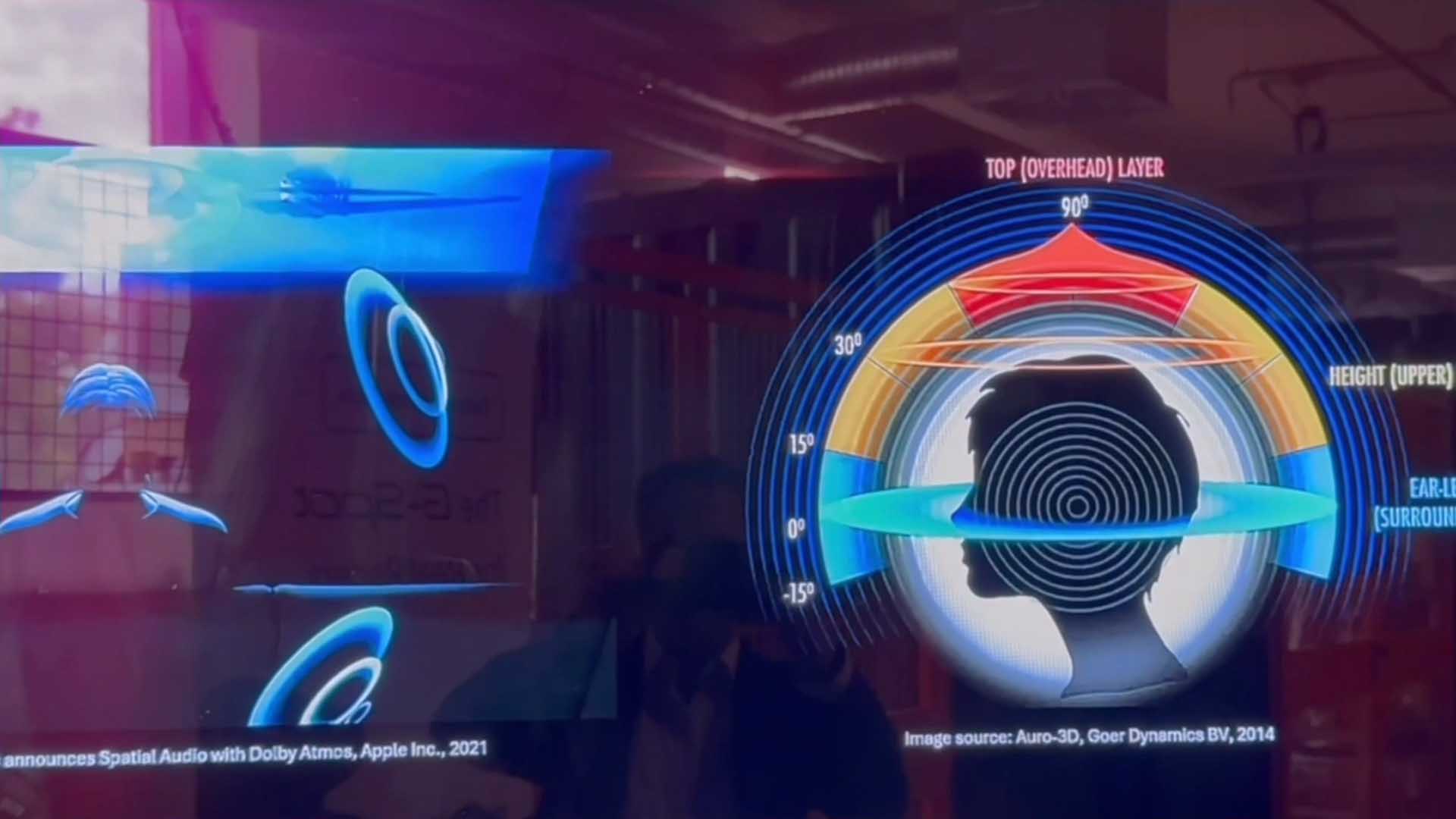
Photo: Ulrich Buckenlei | XR Stager Newsroom captured at UNWARE 2025
How an Immersive Space Works
The infographic illustrates the technical structure of typical Holodeck experience rooms. It shows the modular system consisting of projection, sensors, sound design, lighting control, and an AI module. At the center is a controlling AI framework that orchestrates all components.
Depending on the room situation, the modules can be used flexibly – for museums, training centers, or events. The graphic illustrates: immersiveness is not an effect, but the result of intelligent system integration.
- Modular architecture: Scalable for flexible applications
- AI at the core: Intelligent orchestration of all modules
- Platform concept: One system, many applications
The visualization shows how technology becomes an immersive stage – structured, controllable, and expandable.
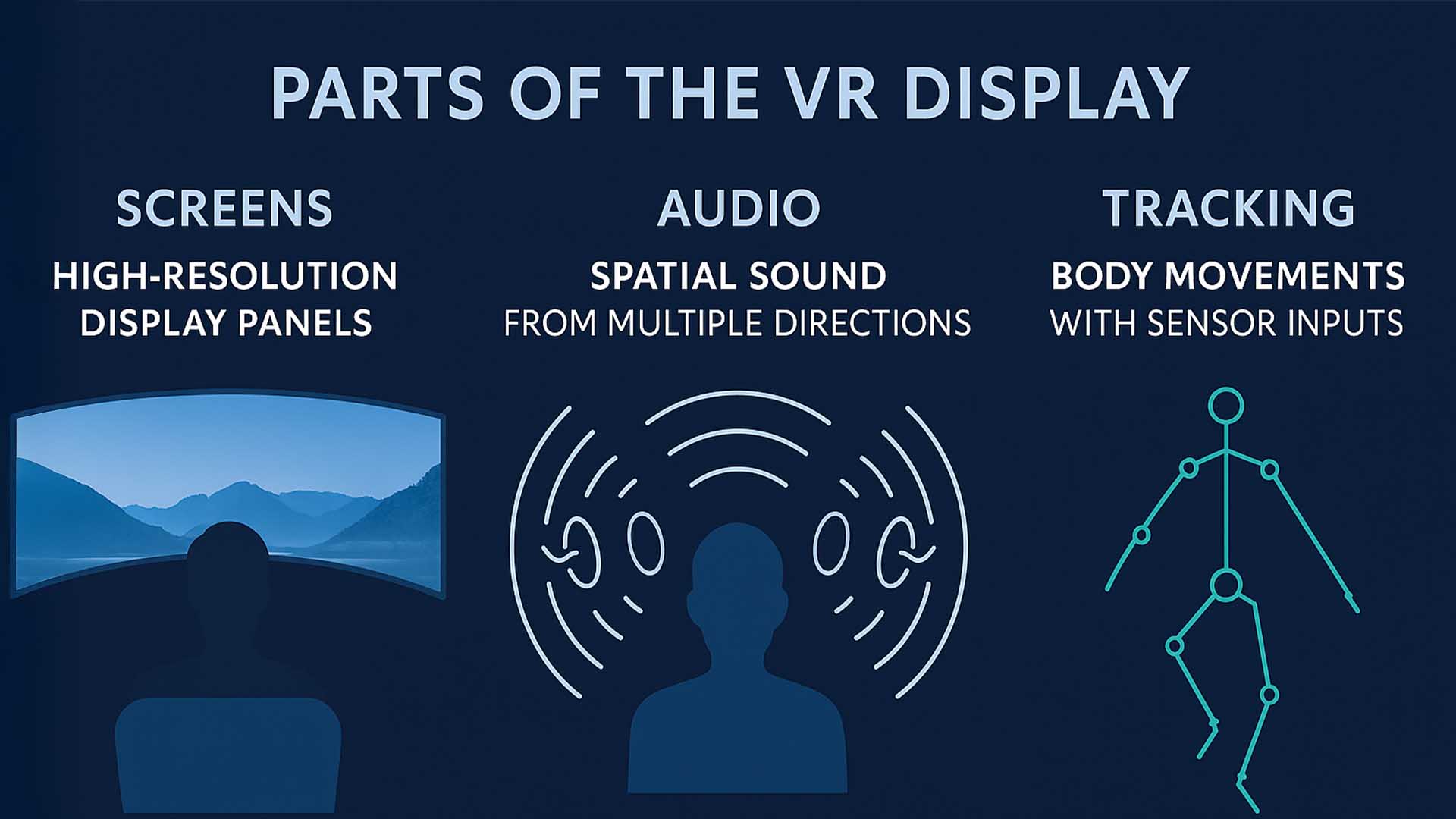
Infographic: XR Stager Newsroom | Real-time experience in immersive space
Experience the Space in Action
The video shows a typical session inside the Holodeck. Visitors move through a constantly evolving environment that feels fully immersive without a headset. The footage captures the combination of projection, sound, and adaptive spatial effects.
What’s particularly impressive is the natural human response – awe, slowing down, total attention. It’s immersion without switching off reality – rather an expansion of perception.
- Authentic reaction: Wonder instead of simulation
- Live session: Nothing is pre-rendered
- Close to reality: No technical interface in the way
The video reveals what words can only hint at: the future of virtuality lies in the space itself.
Video: XR Stager Newsroom | Real-time experience in immersive space
Launch Now with Immersive Spatial Technology
Do you want to inspire your audience emotionally, make your brand innovatively tangible, or create immersive learning spaces? Our team of experts will show you how to strategically apply immersive spatial technology – for museums, events, brand experiences, and training environments.
- XR spaces without headsets: For impressive, shared experiences
- Multisensory spatial design: Controlled by artificial intelligence
- Strategy, design, and implementation: With experienced XR specialists
Contact us now. Let’s create your next immersive experience together.
Contact Us:
Email: info@xrstager.com
Phone: +49 89 21552678
Contact Persons:
Ulrich Buckenlei (Creative Director)
Mobil +49 152 53532871
Mail: ulrich.buckenlei@xrstager.com
Nataliya Daniltseva (Projekt Manager)
Mobil + 49 176 72805705
Mail: nataliya.daniltseva@xrstager.com
Address:
VISORIC GmbH
Bayerstraße 13
D-80335 Munich


